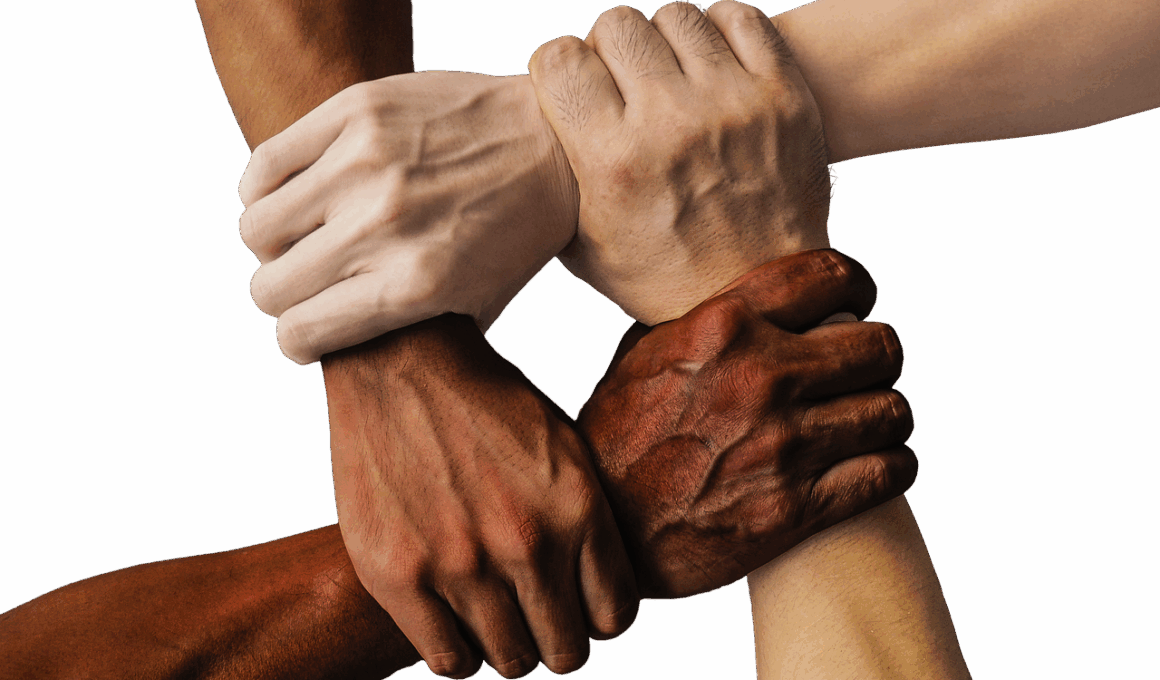Utilizing Unity’s Multiplayer Tools to Build Follower Networks
Unity has become a powerhouse in the realm of game development, especially in creating cross-platform games. Its robust multiplayer tools facilitate the seamless integration of follower networks, enhancing gaming experiences. By leveraging these tools, developers can create persistent online communities where players connect, share experiences, and support each other. These communities are essential for building loyalty and engagement, leading to lasting player retention. Unity’s networking features support various data protocols that make multiplayer interaction efficient. Moreover, with Unity’s matchmaking services, players can find others with similar interests, fostering collaborative gameplay. As a result, the sense of community strengthens, making games more than just a solitary activity. Through social features implemented in Unity, developers can allow players to follow each other, create clans, or join forces to achieve common goals. This transforms traditional gameplay into a socially interactive experience. Thus, implementing follower networks not only enhances individual enjoyment but also encourages sustained interaction among players. Unity’s commitment to supporting cross-platform functionalities ensures that players from different platforms can engage seamlessly, bolstering these networks across a variety of devices and platforms.
The customization options available in Unity encourage developers to create unique gameplay experiences. By utilizing the Unity Asset Store, teams can access an extensive library of resources. These assets range from 3D models to scripts and can accelerate game development. When creating follower networks, developers can choose assets that enhance social features and improve player interaction. For example, there are plugins specifically designed to facilitate leaderboard implementations, which can motivate players to engage more with their networks. These custom solutions often align perfectly with the desired community experience. Additionally, customization extends to user interfaces, allowing developers to tailor how players view their follower networks. Smooth and engaging interfaces promote user satisfaction, which can lead to increased activity within the network. High-quality UX designs directly impact player retention and interaction levels. Crafting intuitive menus that highlight social features, available friends, and event notifications can enhance network engagement. Furthermore, regular updates and new content can keep the community buzzing and invested. Unity’s flexible environment enables developers to iterate on these features effortlessly, ensuring that player expectations are met or surpassed, effectively fostering loyalty within the follower networks.
Building Community through Engagement
Engagement is vital in establishing a successful follower network. Unity offers several tools designed to increase player engagement, such as in-game events and real-time notifications. These features create ongoing interactions among community members. By hosting regular events, developers can encourage players to team up and compete, fostering stronger connections. Moreover, implementing reward systems can incentivize participation. By offering exclusive in-game rewards for engaging with friends or accomplishing community tasks, developers can drive player behavior positively. It’s essential to balance competition with collaboration, creating an environment where players feel supported. Furthermore, developers can utilize analytics tools integrated into Unity to track player behaviors and preferences. Understanding these trends allows for tailored community-building strategies that resonate well with users. Regularly analyzing engagement metrics enables teams to pivot their approaches to maximize connection opportunities. Importantly, when creating events, developers should ensure accessibility, so all players can participate, no matter their skill level. Unity’s flexible development framework supports accommodating various player needs and engagement levels. Consequently, fostering a welcoming and inclusive environment can dramatically enhance the player experience, creating an active and loyal community, ready to endorse and promote the game.
The role of social media cannot be underestimated in fostering follower networks. Unity developers can effectively utilize social platforms to connect players beyond the game. By integrating social sharing features, players can showcase achievements and share experiences, drawing new players into the game. Leveraging platforms like Twitter, Facebook, and Instagram can amplify community visibility and engagement. Developers can also host social contests or campaigns to build hype and encourage sharing among friends. This interconnectedness promotes organic growth and community bonding, allowing followers to form relationships both within and outside the game. Unity’s cross-platform capabilities facilitate easy sharing, making games accessible across various devices, enhancing the likelihood of generating buzz. Additionally, developers can encourage influencers and content creators to showcase their games, expanding reach further. Fostering partnerships with influential figures in the gaming community can provide valuable exposure and credibility. Moreover, setting up community-driven forums can allow players to interact, share tips, and develop friendships outside the game’s immediate environment. Unity’s tools can support these external community-building initiatives, ensuring continuous engagement while players are away from the game. Ultimately, nurturing an ecosystem around follower networks can significantly enhance game longevity.
Unity’s Analytics for Community Insights
Data-driven insights are crucial for optimizing player experiences in follower networks. Unity provides robust analytics capabilities that enable developers to track player interactions and behaviors effectively. Understanding how players interact with each other within their networks can inform better design choices and improvements. For instance, by analyzing which social features are most engaged with, developers can enhance areas that promote the sense of community. Adjusting based on these insights could mean refining matchmaking systems or upgrading communication tools. Additionally, understanding demographic breakdowns and engagement levels can allow for targeted marketing campaigns that reach the right audiences. This helps in maximizing resources and ensuring investments are effectively utilized. Regularly reviewing analytics data can also help in identifying potential drop-off points, allowing for preemptive adjustments to keep players engaged. Furthermore, seeking direct player feedback through surveys integrated within the game can provide qualitative insights that complement quantitative data. Unity’s analysis tools support an adaptive development approach, ensuring that follower networks evolve as player preferences change. By being responsive to these changes, developers can nurture a thriving, engaged community that remains loyal over time while maintaining high engagement levels.
Quality of interaction within follower networks often defines their success. Unity allows for rich communication features such as in-game chat and messaging, which are essential for building relationships among players. These features can be customized to enhance user safety and control. Providing strong moderation tools can help maintain a welcoming atmosphere, where players feel safe and respected. Effective communication can facilitate collaboration and strategizing, directly benefiting gameplay outcomes. Additionally, integrating voice chat can further enrich the interaction experience, making it more personal and engaging. These immersive social features can attract players and keep them invested in their game and network relationships. However, it’s important to monitor player interactions closely to prevent harassment and toxicity. Player reports and feedback should be heavily considered to foster a positive community environment. Unity developers must prioritize these aspects to cultivate a sense of belonging among players. Addressing and resolving issues swiftly can build trust and strengthen community loyalty. Ultimately, facilitating meaningful interactions helps retain players and encourages long-term community involvement, ensuring the network thrives over time. Unity’s tools support developers in creating and maintaining these vital social components efficiently.
Future Directions for Multiplayer Networks
As technology evolves, so will the capabilities of multiplayer networks in games developed with Unity. Emerging technologies such as augmented reality (AR) and virtual reality (VR) are set to enrich the follower network experience immensely. By integrating AR and VR, players can experience immersive social interactions that transcend traditional gaming environments. Unity is at the forefront of these advancements, equipping developers with tools to create highly interactive multiplayer experiences. The combination of AR and VR with traditional gameplay could open up new avenues for collaboration and community building, enabling players to engage in ways previously unimagined. Future updates and tools from Unity will likely focus on refining these interactions and making them more accessible to all players. Furthermore, integrating artificial intelligence to create intelligent matchmaking algorithms can further personalize the community experience. By taking player skills, behaviors, and preferences into account, networks can become more refined and tailored. Developing followership systems alongside these emerging technologies will remain vital, keeping communities engaged and dynamic. Unity’s commitment to embracing these advancements is crucial for the future growth of multiplayer games and follower networks.
In conclusion, leveraging Unity’s multiplayer tools to build follower networks transforms gameplay into a highly engaging and collaborative experience. By focusing on player interaction, developers can create supportive communities that encourage long-lasting relationships. Integrating social media sharing, competitive events, and effective communication features enhances these networks and increases player loyalty. Additionally, data-driven decisions facilitate continuous improvement, creating environments that adapt to player preferences and behaviors. Unity empowers developers to harness these strategies effectively, influencing the overall success of games within the cross-platform space. As the gaming industry moves forward, being open to emerging technologies will be critical. Innovations like AR and VR promise to reshape social interactions within games, further enhancing follower networks. Emphasizing community-building aspects will provide players with experiences beyond gameplay, reinforcing their investment in the game’s ecosystem. Thus, developers must recognize the value of nurturing these networks by incorporating player feedback, enhancing safety measures, and providing engaging content. Ultimately, successful multiplayer games will thrive on the strength of their communities and follower interactions, making Unity an essential partner in achieving these goals. This strategic approach ensures that games remain relevant in a competitive landscape, appealing broadly to diverse audiences.


